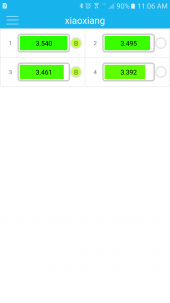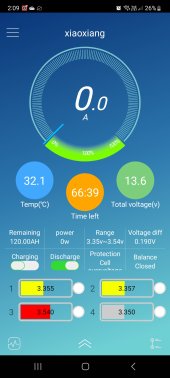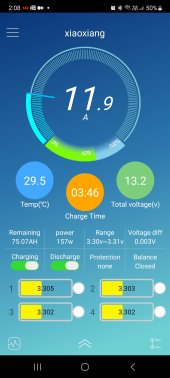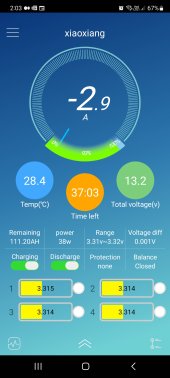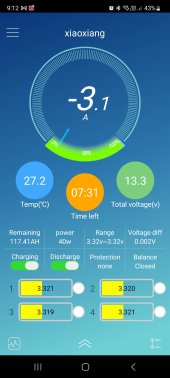Inq720
Odysseus, expert on the Siren's call
I think these two "wordings" are for the same feature. I had my built battery sitting for two months at about 40% discharge (reading here that storing at 100% SOC was bad on cells). No external loads were on the battery during the two months. The Bluetooth was on as I checked in on the battery every so often. I went to charge the battery and the BMS kicked out with 2 cells reaching 3.65 volts. The two other cells (1 and 4) were at 3.364 and 3.372 volts.
Overkill says,
I am now manually charging the two low cells because the BMS can't seem to handle the large discrepancy. Is there any information on how much delta voltage an Overkill Solar BMS can manage? Also, when in this "Static Balance" mode it sounds like it will try to keep them balanced all the time. Why would Overkill default to this being off? Why would using this feature be a bad thing?
Thanks.
Overkill says,
When enabled, the balancing routine will only be performed when charging.
When disabled, the BMS will enter Static Balance mode, where it will balance when both charging and
discharging.
I am now manually charging the two low cells because the BMS can't seem to handle the large discrepancy. Is there any information on how much delta voltage an Overkill Solar BMS can manage? Also, when in this "Static Balance" mode it sounds like it will try to keep them balanced all the time. Why would Overkill default to this being off? Why would using this feature be a bad thing?
Thanks.



